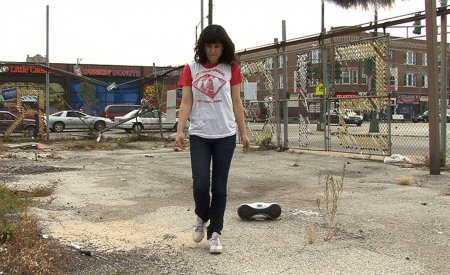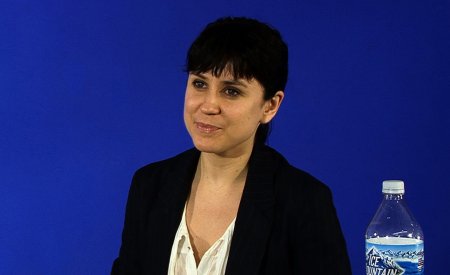Submission begins with a monochromatic blue wall, which is interrupted slowly, first by a shadow, then by voices, and finally by a glimpse of the room in which the blue wall sits. But it is only as we begin to orient ourselves to this ‘blue room’ that we are transported to an altogether different environment – a street corner in an abandoned lot complete with half-overgrown asphalt and chain link fence. The polarity of these two sites is stark, and what unfolds throughout the film, which flips back and forth between each, refuses to fit nicely into our expectations for the space of the studio or that of the street corner. In fact one performance occurs outside of the studio, in the nondescript city block with Behm dancing to Q-feel’s Dancing in Heaven (1982); and, like the museum, in which it is in continuous reference to, viewers pass by (in their cars) like the crowds that funnel through galleries stopping only briefly to catch a glimpse of the occasional masterpiece. So, we see here the collision of popular culture (in the form of the British pop-song) and high art qua dance performance. This collision is addressed further as we flip back and forth between this performance and the (blue-room) interview. We begin to make assumptions about the relation of the two scenes, filling in missing links in order to create an understandable narrative. But it is in this lack of a clear narrative that the video begins to expose the disconnect between popular culture, high art, politics and a variety of publics. The interviewer’s questions are taken from Paris Hilton’s My New BFF (2008); and Behm’s responses are constructed from disparate sources including Andrea Fraser’s, May I Help You?, Barack Obama’s, Democratic National Convention Speech (August 28, 2008), and John Burger’s, “On the Problem of Autonomy of Art in Bourgeois Society.” The video itself, then – in co-opting these popular, art, art historical, and political sources – highlights the uneven and discrete positions of understanding that are determined by viewers’ knowledge in these disparate fields.
Philip Kelleher, 2011







